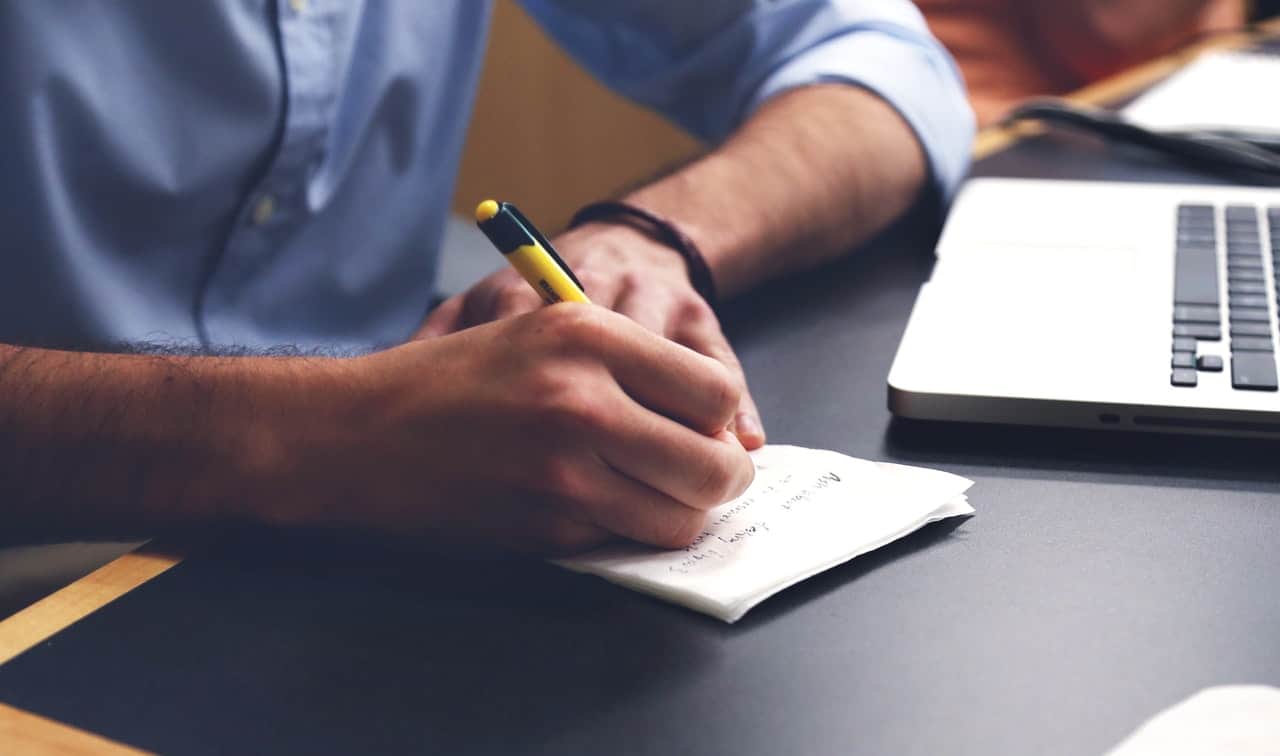Techniques to Improve Your French
How to Improve Your French Writing Skills [Do at Home]
Writing is one of the hardest components of language learning. One of the reasons it can be so difficult is because you never really know if what you’re writing is correct. There are plenty of people, websites, companies out there that will tell you that in order to improve your French writing abilities you need to go out there and practice writing short stories, poems or even essays.
I really don’t like this approach because it gets you in the habit of making all sorts of mistakes. When you continuously make the same mistake over and over you internalize it and then it makes it difficult to correct because it no longer sounds wrong to you.
People also recommend that you take the time to write something and then bring it to someone, whether it be a friend, tutor, or teacher, and have them correct your mistakes.
Now, although I don’t think this is the worst thing you could do I’m still not a big fan because you still will likely write things incorrectly.
What I’m getting at here is that I firmly believe that you should never have to write anything that’s considered incorrect (whether that be grammatically incorrect or just considered incorrect by native speakers).
Now, never making a mistake is probably an impossible task, however, it definitely is possible to minimize them and correct them within seconds or minutes. How can you do this? Let’s talk about two easy-to-perform techniques that anybody can use at home.
If you were to start learning a musical instrument how would you go about it? Would you pick up whatever instrument you were learning and start right away with composing your own songs? Chances are you wouldn’t. If you’re like most people you’d start by learning songs that were written by others.
Once you felt comfortable with those you would move onto ones that were a little harder, and continue this pattern. At some point in time, after having practiced using songs that other people have written, you would start to feel confident enough to be able to compose your own songs.
Getting to this point can take quite a lot of work, but nobody denies that it takes time. Learning French is no different than learning a musical instrument.
If you are currently learning French and struggling to write anything without the confidence that what you are writing is correct, then understand that it’s completely normal. You’re no different than the musician who doesn’t feel comfortable composing their own music.
Here’s one technique that you can do practice to improve your French writing without internalizing any mistakes. This is one of the methods that is described in the article “How to Improve Your French [The Complete Guide]” so if you’ve checked out that article you should be pretty familiar with it. If not, keep reading as I’ll describe it right here.
- The first step to this technique is to locate some written content that has both an English version and a French version. It should really be something that was professionally made such as a bilingual book. If you have French-learning materials that have English to French translations then start with those as they should be easier to work with. It doesn’t really matter how long your chosen content is, but the longer it is the more you’ll have to practice with.
- Take a few sentences at a time (or even just one sentence if you’d like to start slow) and study both the English and the French version until you feel quite familiar with both. Don’t worry about doing this quickly, take as much time as you need.
- Begin by taking the English version of your content and translating it into the French content. You absolutely must translate it verbatim so that you are 100% sure your translation is correct. Don’t rely too much on your own French knowledge or translation skills and just worry on relying on the French translation because you already know that it’s grammatically correct.
- Take a look at your finished translation and if you weren’t 100% correct start over from the beginning and retranslate everything. Don’t just fix each individual mistake. Go through and rewrite everything. If you just correct each mistake without doing it all over you risk internalizing some of those mistakes and that’s the last thing that you want here.
- Move through your text translating each sentence from English to French until you have completed everything. Once you feel confident translating the English version to the French version start over and translate in the opposite direction. If you would prefer, instead of translating the entire text from English to French and vice versa you can simply focus on one sentence at a time and translate back and forth. At the end of the day it really is up to you.
There’s a bit of a misconception in the world of language learning that learning through translation is a bad thing. Believe it or not translation can be an incredibly powerful tool to help you learn French when done correctly.
What you don’t want to do is translate on your own without having any clue whether or not your translation is correct OR translate vocabulary out of context. There are so many flashcard systems out there designed to teach you vocabulary that only give you one or two word translations for each foreign word.
The obvious issue with this is that there are plenty of French words that don’t have direct translations and can’t be learned by just comparing them to another word in English or another language.
That’s why you should always learn new vocabulary through complete sentences so that the full definition of the word can be captured through the context of the sentence.
If you still don’t want to use this technique because of the translation element then just leave the English content out and write the French part. If you choose to do this make sure you fully understand what you’re writing and don’t just write out the French content blindly.
There’s another easy technique that you can do at home that will help your French writing skills and involves using movies or online videos with subtitles. I find YouTube videos to work best for this, but you can choose whatever you’d like.
The only real requirement for this is that the subtitles match what’s being said exactly and don’t just capture the gist of everything. Put the subtitles on and let your video (or movie) play for a just a few seconds before pausing it. Don’t look at your video during this period, just listen to what’s being said. Write down what you heard during those few seconds to the best of your ability. This should only be a few sentences at most.
When you’re done look up and read the subtitles that should be on the screen. If what you wrote matches what’s written on the screen then great, you can play the video again and pause it again in a few seconds. If you’ve made any mistakes at all, no matter how small, try to rewrite the entire thing again.
You don’t have to rewind your video and listen to it all again (although you can if you want). Keep moving through your video until you’ve gone through it all at which point you can either start back from the beginning or move onto something new. One of the big reasons I prefer to do this with YouTube videos is that you can get through an entire video in one sitting.
Not only does this technique do wonders for your writing skills, it also can help your oral comprehension seeing as you are trying to write down what you are listening to. Although this can really be done with any video (or audio) I high recommend you do it with something that has subtitles (or at least some sort of transcript that you can use) so that you know that what you are writing is correct.
Remember, we don’t want to get into the habit of making mistakes and any mistakes that we do make we want to correct immediately.
Alright let’s recap. In our first method you have to find a piece of content that is in both English and French. Study sections of both until you feel familiar with them and then proceed translate chunks of the English text into the French text verbatim.
Either make your way through the text translating the English to the French and then do the same in the opposite direction or just take each sentence (or short paragraph) and translate it back and forth. The only real rule here is that you find something that was professionally made and translate thing exactly as they are.
Our second method just requires that you find a video or movie with French subtitles, put the subtitles on, and then proceed to listen to the video without looking at the screen. Pause it after a few seconds and try to write down what you’ve heard.
When you’re done, look up at the subtitles and verify if you’ve written everything down correctly. If not, rewrite everything without looking at the subtitles and move on.
What are some of your favorite methods to improve your French writing abilities? Comment below and let us know how they work!


